Shortfinger
Hero Member
- Joined
- Apr 7, 2015
- Messages
- 569
- Reaction score
- 2,476
- Golden Thread
- 0
- Location
- Valley Center, CA/Yuma, AZ
- Primary Interest:
- All Treasure Hunting
Thanks, Lucky. Fun story. Welcome to TNet.
JB
JB
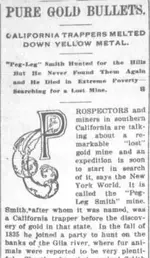
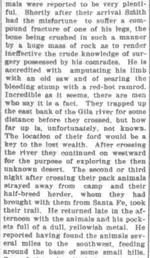
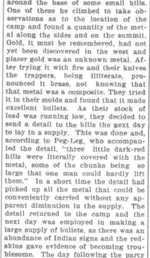
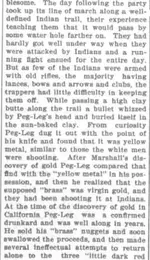
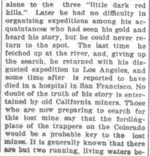
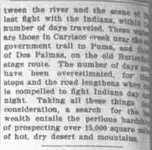
thanks for the welcome, Shortfinger.
i've been glued to this thread and the peg-leg story for the last few days. seems like an easy one to figured out, lol.
maybe those 3 hills get buried in the sand like the old mission in baja does... then again... wouldn't it be funny if the spanish pearl ship ran aground on top of them... talk about a 2fer!
i did run across this version of the original find late last night. i know i have no proof that this is the real version... it just sounds 'right' to me. so for what it's worth, here goes
View attachment 1224034View attachment 1224035View attachment 1224036
View attachment 1224037View attachment 1224038View attachment 1224039
"little dark red hills" hmmmmm
i've found two copies of this story. the one i posted is from The Caldwell Tribune (caldwell, idaho territory) june 19,1897. the same story also appeared in the nov. 19, 1896 issue of the Phillipsburg Herald (phillipsburg, kansas). haven't been able to find the original New York World article tho.
i think the original writer made a couple of mistakes. it makes more sense to me that the party left santa fe and trapped down the rio grande to just west of victorio peak (truth or consequences area). from there they traveled west over the divide about 30 miles to the headwaters of the gila. then trapped down the gila to the confluence with the colorado at yuma. from there they trapped up the east bank of the colorado (not the gila) to where they forded the river and headed west across the desert...
he also talked about the "old gov't trail to puma". i'm sure that was supposed to be yuma.
i liked this version because some of the other versions have given me questions. for example, the sandstorm story. why were they moving in a bad sandstorm? all the desert movies i've seen, when they see the sandstorm coming, everyone hunkers down, covers up and tries to ride out the storm as best they can. + in the movies i've seen about the dust bowl years, no one is out in the storm. looks to me like it would be tough to breathe. so why was peg-leg moving in a bad sandstorm?
i never thought this might be a compilation of stories tho. what makes you think that?

Totally agree with your theory. I search dry wash areas in the hills and have found come small nuggets over the years.
I might have that article Old Bookaroo, I'll check when I get home late tonight.... If I do I can email it to you...
PLL



If I do find it, I can scan it, but it will have to be Thursday or Friday before I can get time to scan... But I'll let everyone know if I find it tonight....
PLL
